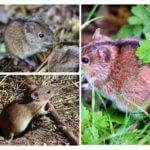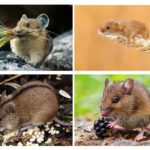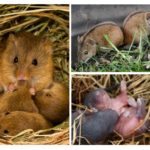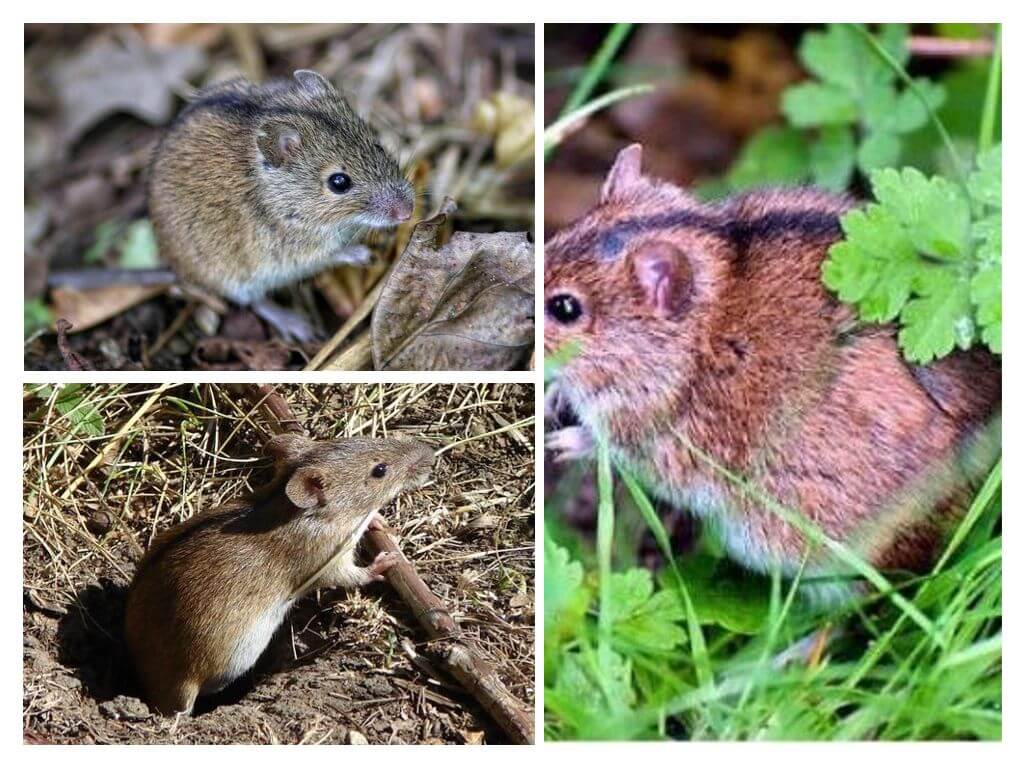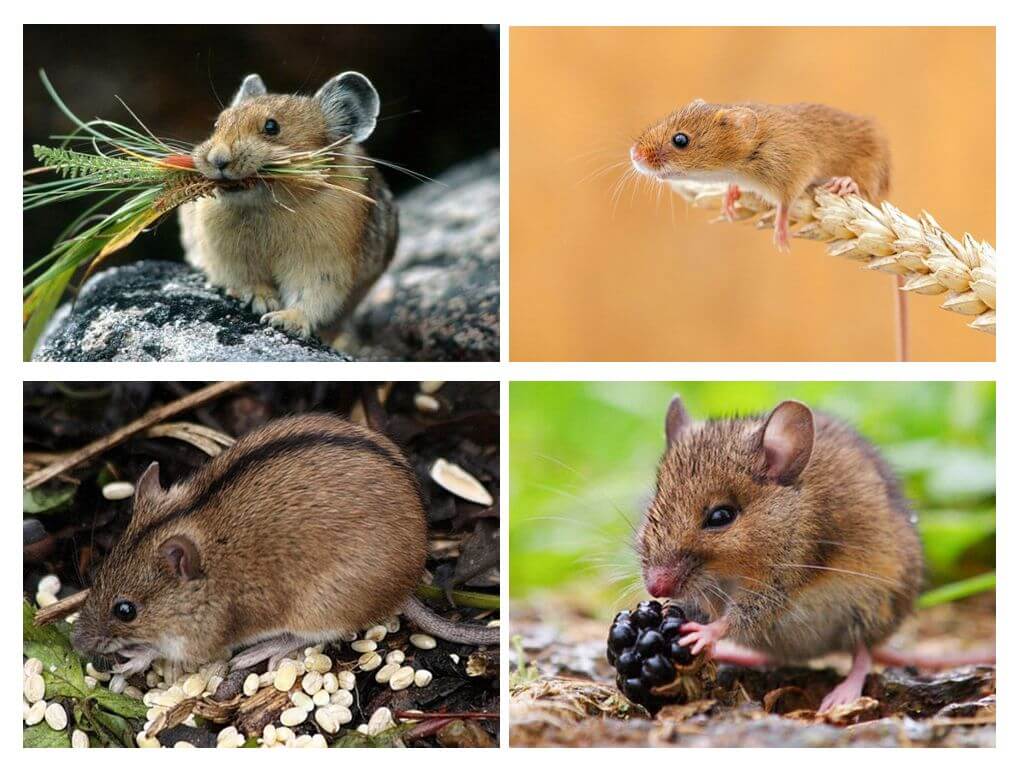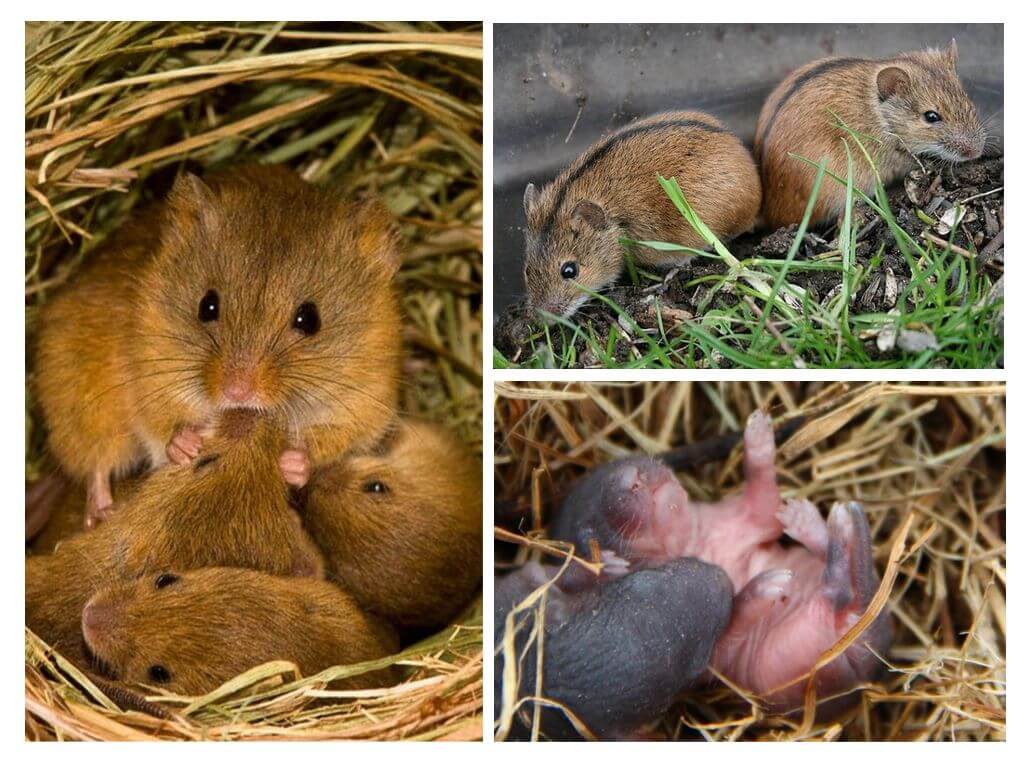Field mice
Content
- Harvest mouse
- Rodent feeding
- Breeding vole
A field mouse is a small rodent spread all over the world. It belongs to the most numerous mammal species - the mouse classification. On the earth there are more than 100 species. Perfectly adapt to any conditions of existence. No mice are only high in the mountains, in an area covered with ice.
Appearance
The little animal is called differently: field, meadow, vole, baby, striped. Appearance is familiar to everyone, since field mice are frequent cohabitants of people.In cold weather, or with the onset of other adverse conditions in the natural environment, they move to barns, warehouses, barns, outbuildings, and houses. Often live in gardens, in gardens, home gardens.
Description of the field mouse:
- The maximum body length is no more than 12 cm, the average size is 10 cm without tail. Thin tail is 70% of the length of the body.
- The body is oblong, elongated rear feet. When running, always come forward.
- Long muzzle, small round ears, oblong spout.
Appearance is very attractive, harmless, cute. Especially interesting red nose. Mouse structure does not differ from the general proportions of most species of these rodents.
Wool is short, hard has an uneven color. The abdomen is always lighter, the back with a black stripe. You can distinguish a vole by a strip on the back. Coloring, coat color varies by region. The mouse vole is gray, brown, ocher, red. In the summer period it is darker, it begins to change by winter. Below are the field mice in the photo, you can see the differences of the animal from other rodents clearly.
Interesting!
Unique vole teeth grow throughout life.In addition to a number of small teeth in the upper jaw. On the lower jaw there is a pair of long incisors. They appear in the second month of life of the mice, they grow by 1-2 mm daily. To prevent excessive increase in teeth, rodents are forced to constantly grind them. Bite hard objects that do not represent food value, but those around them.
How much a small animal weighs, it is not difficult to guess. The small animal gains no more than 30 g in weight. On average, a field mouse weighs 20 g.
Food addictions
What a field mouse eats, interests the majority of the population. Since almost all pests bite, wood, concrete structures, bricks. Some mice gnaw foam, plastics, rubber and other synthetic materials.
but as food mice are interested grains, seeds, succulent part of plants. With the hunt mice bite the bark of trees, young shoots of plants, seedlings, ripe vegetables, fruits. In a small amount eat worms, insects, eggs and chicks.
On the human territory, the red mouse gnaws almost all food stocks - grain, cereals, legumes, flour, vegetables, fruits, bakery products, meat, lard, sausage, and much more.
Interesting!
A mouse with a strip on the back makes stocks for the winter. Once in the ground during the cold season, it eats everything that it managed to train into the hole for the entire warm season. Those individuals who have the opportunity to settle in housing, outbuildings, barns, warehouses of a person are not worried about winter food. What a rodent stores is everything edible for him that can fit in a burrow.
During the day, the field mouse should eat 5 g of food, drink 20 ml of liquid. If there is not enough water, it nibbles at the succulent parts of the plants. Stocking up for the winter starts from the middle of summer.
Lifestyle
In countries with warm climates, a meadow mouse is active year round. In our area with the onset of cold weather, the mice do not hibernate, but the process of reproduction of the new generation is slowing down. Relatively well tolerate low temperature. Safe winter can on the field.
How a field mouse hibernates depends on the objects around it, its natural conditions. In the warm season, rodents live in the field, with increasing numbers, the onset of adverse weather, cataclysms - fire, drought, flooding, premature frosts, settle in gardens and vegetable gardens.Each individual settles his house at a depth of about 1 m, in winter it goes deep down to 3 m. Usually a meadow mouse usually hibernates in a hole.
Interesting!
The abode of voles includes a nest where mice are born, matures, several cameras with food reserves, labyrinths of moves with a mandatory access to the water.
In addition to burrowing, wintering takes place in haystacks, shovels left on the field, ricks, barns, sheds, economic outbuildings. The most courageous or arrogant make their way into the house. The question of where the voles live in the winter can be answered ambiguously - wherever possible.
Hibernation for a field mouse is uncharacteristic. Hibernation rodent living in our area, can not. With an insufficient amount of food, if the animal could not store food, it risks dying. In winter, occasionally comes to the surface during the thaw.
On a note!
Some species of voles sleep in winter, they can wake up with the onset of heat. Prefer to sleep in the hole. To accumulate nutrients start in the summer, a layer of fat is deposited, which disappears over the winter.
Behavior features
Field mice are extremely active, mobile, which is associated with the peculiarities of metabolism.During the day, the rodent eats about 6 times, but quickly consumes energy. Does not tolerate hunger, even more thirst. Without food, water lives no more than a week.
Mice can live in any terrain., adapt well to new conditions. Moved by assimilated lines defined by trajectories. Mark their territory with urine. Activities intensify with the onset of darkness. In dark rooms are active during the day.
Mice are extremely cautious, which makes them fearful in the eyes of humans. The slightest rustling sound makes the rodent to flee to shelter, to hide in a burrow. Enemies of mice: lizards, snakes, rats, dogs, cats, wild animals. Danger lurks at every turn. Who eats a field mouse can be listed for a long time.
The small rodent tries not to run off far from the hole, moves away by 1 m. Prefers to move in the shade, under the bushes, in the tall grass. Each individual is assigned its territory. They live in flocks, where there is a leader - a male, several dominant females.
On a note!
Life expectancy in the wild is 1 year, although according to genetic data they can live up to 7 years. Blame the predators for hunting field mice every day. How many live in artificial conditions, depends on the conditions of detention, proper nutrition.The average age is 3 years.
Breeding features
The field mouse becomes sexually mature after 3 months. The young female produces from 1 to 3 cubs, the adult - up to 12 in one litter. Pregnancy lasts about 25 days.
Cubs are born blind, naked, absolutely helpless. Photo of field mice after birth is presented below. The female takes care of the young offspring until 1 month, then the young are exposed to exile. Themselves equip housing, get food.
9-10 days after birth, the mouse is again ready for fertilization. For the year reproduces new offspring up to 4 times. Favorable for this period begins in May, lasts until October.
Sabotage
A field mouse is capable of causing tremendous damage to agriculture. He digs numerous burrows in the fields, damages the ears of wheat, leaves mounds of earth. As a result, it is difficult to harvest, the grain loses its presentation.
Settling in barns, in warehouses and other premises where a person began to store cereals, grain, flour, and mice, during the winter they eat one third of their stocks. Contaminated product feces, urine. In the room there is an unpleasant mouse smell.
On a note!
Vole does not bite.At the sight of a person trying to quickly hide. But, being driven into a corner, it is able to pierce with sharp teeth. It is dangerous to spread viral, bacterial, fungal infections, tularemia, plague, fever, rabies.
Rodent control
The increase in the number of mice on the field faces serious losses for agricultural figures. No less damage from rodents in the garden, in the garden. To destroy pests using poisonous bait, poison for mice, mouse cells. Are fighting folk remedies, professional preparations. Indoors use rodent ultrasound repeller, strong odor products, plant repellents. Preventive measures are also important.

